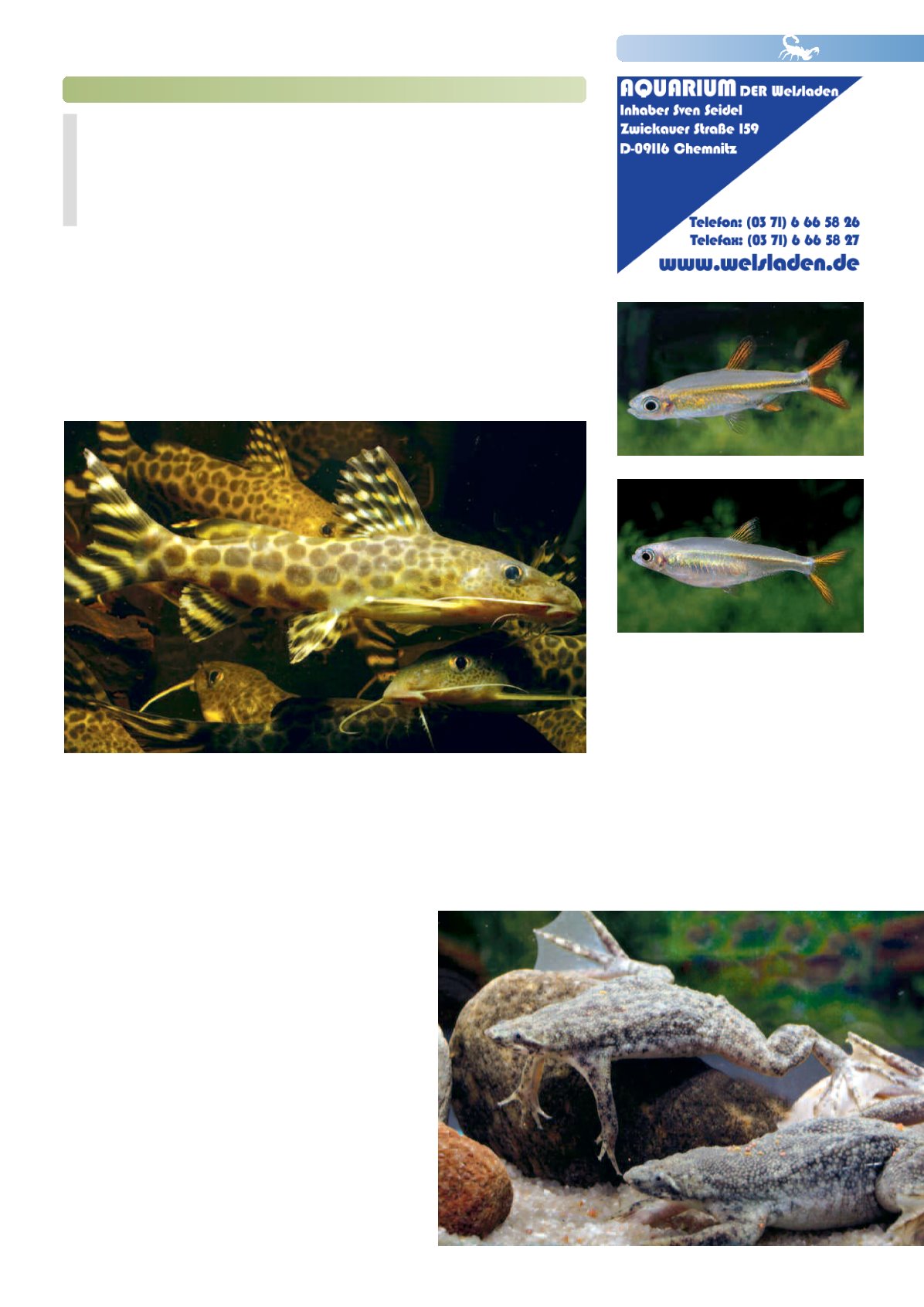
NEWS 110
19
Relative to the huge number of fish species that exist - some 32,700 species are
currently known to science, half of them from fresh water - only very few are
maintained at least now and then in the aquarium. In fact only around 400
species of freshwater fishes are always available in the trade. So it is no wonder
that new species are constantly being discovered. On the following pages we
would like to summarize some of the latest new imports fromAquariumGlaser.
From all over the world
The latest imports
by Roman Neunkirchen
New freshwater imports
Synodontis pardalis
These gorgeous catfishes,which attain around 20 cm in length,come fromCameroon.The species is
so far knownonly fromtheRiver Dja and its tributary the Libi,andhence is unfortunately regardedas
anendangered species,as theDja is severelypolluteddue to intensive cobaltmining.Whichmakes it
Pipa parva
This dwarf honeycomb toad fromVenezuela is a true rarity in
the aquarium. The specimens in the trade are German
captive-bred. At first glance these nice little animals are
reminiscent of the dwarf clawed frogs (
Hymenochirus
), but
can always be told apart from them by the branched
fingertips typical of all
Pipa
species.
Ladigesia roloffi
This gorgeous West African characin -
imported from Guinea - grows to only
some 3-4 cm long. Even so these active
swimmers shouldn't be kept in too small an
aquarium. Males can be easily recognized
by the remarkably modified anal fin, whose
function hasn't been studied. Breeding this
characin is relatively easy, but it isn't very
productive.
even more pleasing that the species is occasionally imported,
and that (conservation) breeding can be considered.
Synodontis
pardalis
,like
S.decorus
and
S.brichardi
,belongstotheveryslender
Synodontis
species. They are astonishingly peaceful among
themselves.This
Synodontis
species should be kept in a group of
5-8 specimens.
S. pardalis
is undemanding as regards food and
water chemistry.


